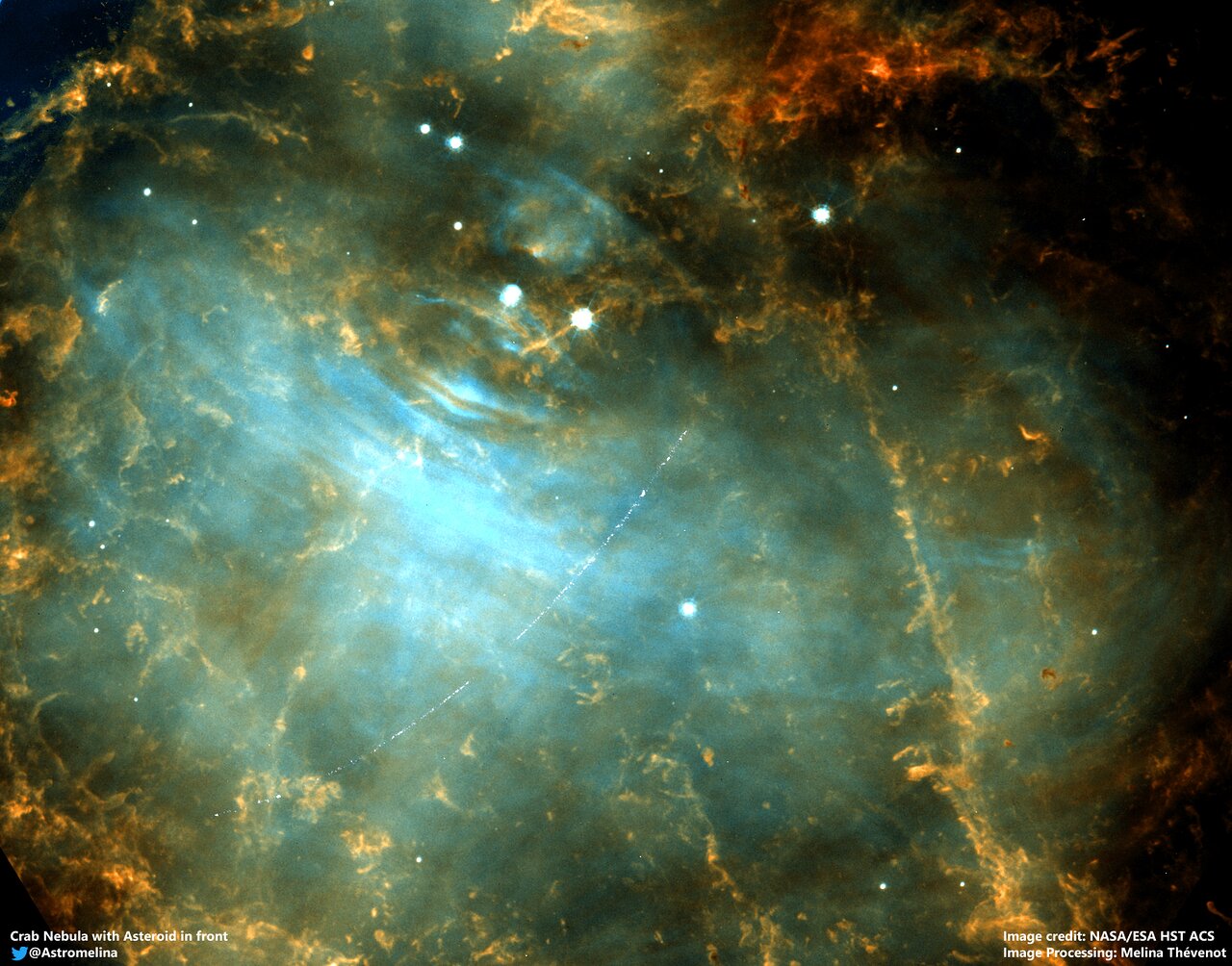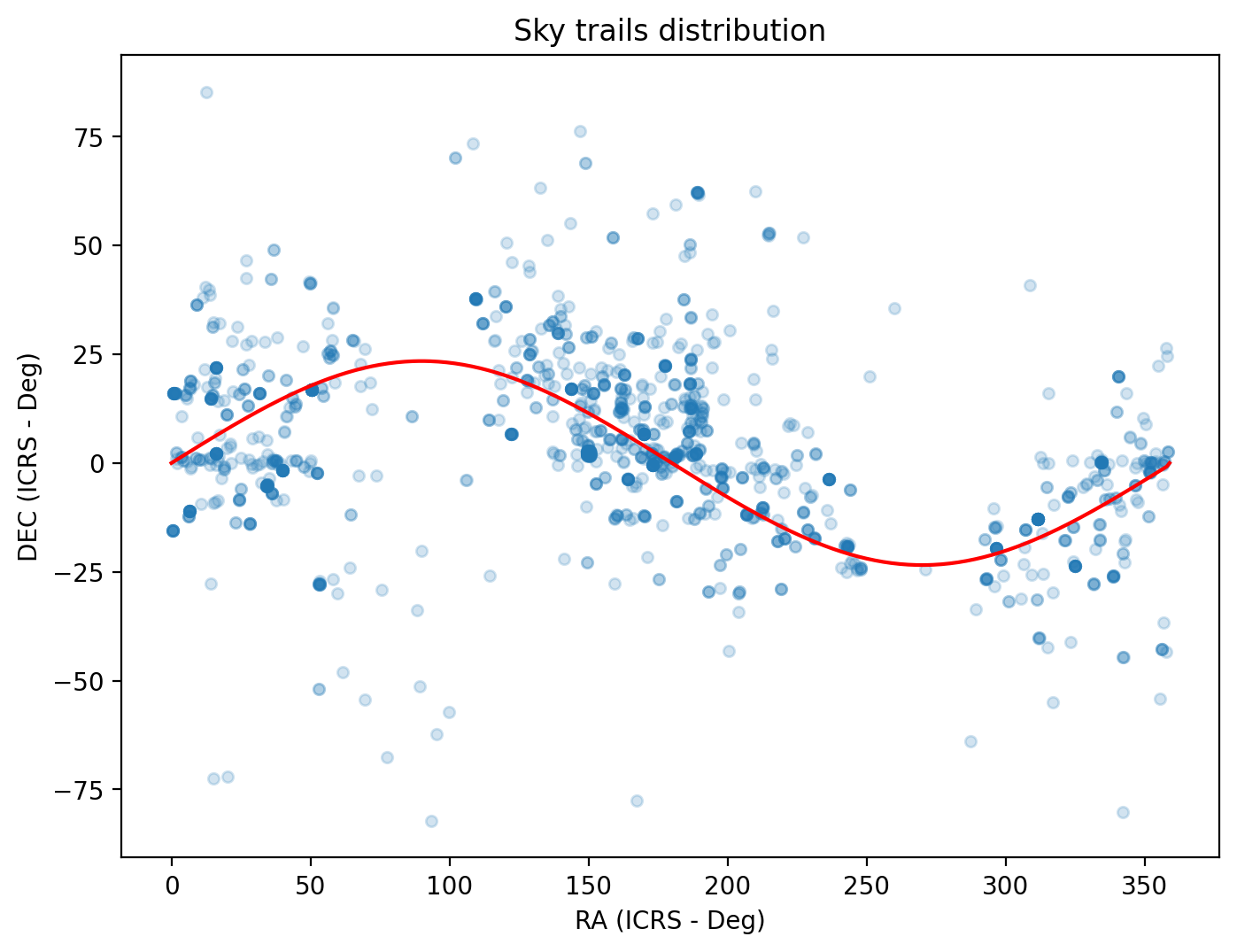Hubble Asteroid Hunter: Identifying Asteroid Trails in Hubble Space Telescope Images
- 1European Space Agency, ESTEC, Netherlands (kruksandor@gmail.com)
- 2Universidad Autónoma de Madrid (UAM), Madrid, Spain
- 3Astronomical Institute of the Romanian Academy, Bucharest, Romania
- 4European Space Agency, ESAC, Spain
- 5Observatoire de la Côte d'Azur, Nice, France
- 6Google, Amsterdam, The Netherlands
- 7Google Cloud, Pittsburgh, United States
In thirty-one years of observations, the Hubble Space Telescope (HST) has produced a vast archive of thousands of targeted observations. This includes galaxies, clusters of galaxies, and gravitational lenses. Occasionally, closer objects such as Solar System bodies or artificial satellites cross the telescope's field of view during the observations, leaving trails in the images. On one hand, these trails can impact the observations. The standard data processing pipeline (DrizzlePac) cleans cosmic rays artifacts (Hoffmann et al., 2021), also removing asteroid trails, but it leaves residuals in the combined images. On the other hand, this is a great opportunity for the Solar System small bodies science, considering the already existing images from the huge HST Archive, containing more than 100 Tb of data and spanning three decades.
Our project is focused on studying serendipitous asteroid trails appearing in archival HST images. We used images from two instruments, namely the Advanced Camera for Surveys and Wide Field Camera 3, the ultraviolet and visible channels. These images were acquired between 2002 and 2021. We built an online citizen science project on the Zooniverse platform, Hubble Asteroid Hunter (www.asteroidhunter.org), launched on International Asteroid Day 2019, to identify the asteroid trails in the images (Kruk et al., in prep.). This project involved more than 11,000 people in search for asteroids, providing 2 million classifications for 150,000 images over a period of one year. The labels provided by the volunteers were used to train an automated classifier based on a deep learning algorithm, Google Cloud AutoML Vision. We recovered 2,400 trails in the HST images in total.
The asteroid trails appear curved as viewed by HST, because of Hubble’s motion around the Earth every 90 minutes. One example is asteroid 2001 SE101 passing in front of the Crab Nebula in a rare cosmic coincidence, discovered by citizen scientist Melina Thévenot and shown in Figure 1. The project also contributed to other serendipitous discoveries, such as new strong gravitational lenses in the background of some famous HST targets.

Figure 1: Trail of asteroid 2001 SE101 passing in front of the Crab Nebula, M1 in 2005. The trail appears curved because of the motion of HST around the Earth. ESA Image of the Week: http://www.esa.int/ESA_Multimedia/Images/2019/10/Foreground_asteroid_passing_the_Crab_Nebula. Credit: ESA/Hubble & NASA, M. Thévenot.
We further analysed the asteroid trails in order to obtain their astrometry and photometry with a customised algorithm. We validated the trails visually, finding 1,700 trails presumably of Solar System objects. Their distribution in the sky is shown in Figure 2. We extracted each trail from the images by using a fixed-width aperture, which was moved along the trail. The position and corresponding flux were obtained for each point along the trail. The calibration was performed using the WCS (World Coordinate System) information stored in the header. As a by-product of this algorithm, we were able to derive partial light curves. The apparent magnitude of the corresponding Solar System object was obtained by integrating all the flux along the trail.
We used the SkyBoT service provided by IMCCE/Paris Observatory and the JPL HORIZONS online solar system data and ephemeris for identifying the known objects. We computed the ephemerides taking into account the position of HST. Despite using the largest databases of minor bodies, we only matched 300 trails with already known asteroids, taking into account the orbital uncertainties and their apparent motion. Therefore, our data contains 1,400 unknown objects or objects with very large orbital uncertainties. This is not surprising, since most of the apparent magnitudes of our trails (Figure 3) are fainter than magnitude 22, which is the approximate limit for the asteroid discovery surveys performed with ground-based telescopes. Most of these objects will correspond to main-belt objects with sizes <1 km, thus will help us characterise the distribution of small size asteroids in the Main Belt, a population poorly explored by current studies.
This project demonstrates the power of combining novel tools such as citizen science and artificial intelligence to efficiently explore archival images and obtain important results, with the invaluable help of Zooniverse volunteers, beyond the original scope of the Hubble observations.

Figure 2: Sky distribution of the asteroids detected in HST observations. The vast majority of asteroids are in the Ecliptic plane (denoted with red). The two gaps are due to the lack of HST images in the Galactic Plane.
Figure 3: The apparent magnitude distribution of the Solar System objects identified in HST observations. The majority of the identified asteroids have magnitudes >22, fainter than the detection capabilities of many ground-based surveys.
References:
Hoffmann, S. L., Mack, J., et al., 2021, “The DrizzlePac Handbook”, Version 2.0, (Baltimore: STScI).
How to cite: Kruk, S., García Martín, P., Popescu, M., Merín, B., Mahlke, M., Carry, B., Karadag, S., Thomson, R., Racero, E., Giordano, F., Baines, D., and de Marchi, G.: Hubble Asteroid Hunter: Identifying Asteroid Trails in Hubble Space Telescope Images, Europlanet Science Congress 2021, online, 13–24 Sep 2021, EPSC2021-669, https://doi.org/10.5194/epsc2021-669, 2021.

